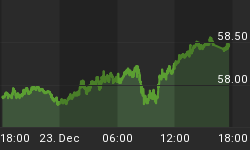Prolonged risk aversion is expected to ensue until Tuesdays presidential inauguration brings in a temporary feel good rally. Having made their third failed attempt to rise more than 25% since the intensification of the crisis, equities, VIX and the yen are expected to further move in the direction of prolonged reduction in risk appetite (equities negative, yen positive, VIX positive). I warned in the Jan 2nd piece Risk Appetite Pushes the Envelope that the trio of risk appetite will be constrained near 940 for the S&P500, $850 for gold (having failed to break its 8-week cycle gains) and 92.50 yen in USDJPY.
The charts below illustrate the relationship between the VIX and the S&P500, both of which suggesting prolonged risk aversion (rising VIX, falling S&P) as the VIX breaks above its 100-day MA for the first in 4 weeks and S&P500 bears the next support of 817. Weekly oscillators for both instruments also confirm further reduction in risk appetite, which could intensify until a possible bottom in Tuesdays US presidential inauguration. Pres elect Obamas speech may will likely give a short-term relief rally on the feel good factor resulting from a turning of the page in the White House. Despite the long term concerns of the upcoming fiscal deterioration, Obamas promised $300 billion in tax cuts will be reiterated during the inauguration, thereby, justifying the next temporary bottom in risk appetite.

The currency implications for the aforementioned pick up in risk aversion is likely to continue boosting the yen at the expense of the Canadian dollar and the NZ dollar, two commodity currencies whose underperformance cannot go unnoticed during. This weeks S&P downgrade of NZs foreign currency credit rating and the impact of a 3-week low in oil prices is weighing on heavily on NZD and CAD.
8000, 800, 800 Dow, Gold, S&P500 may prove as just a coincidence, as the Dow is most likely to break below 8000, while the S&P500 is the least likely break 800 in the short term.
The European Central Bank delivered the expected outcome of cutting by 50-bps, reverting to what is seen as an incremental pattern of easing for now as the central bank is cautious about driving down inflation further below its 26-month low of 1.6%. Anything less than 1.5% annual would be deemed as outside the definition of anchored price stability but it does not necessarily mean aggressive easing mode (-75 bps).
We should also note that Decembers 75-bp cut from the ECB in December was partly to avoid excessive rate differentials relative to the BoE (-150 bps in Nov and 100-bps in Oct) and Fed (which may have signalled to the ECB that it would enter zero % territory later that month).
JC Trichets press conference suggests a return to incrementalism, rather than the end of the easing campaign, which could extend until rates reach 1.00%.
EURUSD was boosted by higher than expected US jobless claims (524K from 470K) as well as the obligatory post-press conference choppy trading, reaching as high as $1.3239 before retreating towards $1.3050. We reiterate the $1.3030 support remains the trend line support extending from the Nov 21 low through the Dec 04 low. Philly Fed and Empire State showed no marked improvement. Tomorrows US figures on indus production are more likely to trigger market impact than the CPI as production decline seen greater than 1.0% following previous 0.6% drop, while capacity utilization seen falling below 75%.
USDJPYconsolidation ensues between 89.40 and 88.60, while staying clear from retesting the upside limit of 90.20. While much talk is being focused on USDs risk-driven gains, USDJPY remains in a negative bias, with the shorts still looking to test the 88.60 support, a breach of which seen calling up 87.80 and 87.00.















